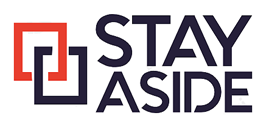While 2025 follows its course, the recruitment landscape continues to evolve at lightning speed. From AI-driven sourcing to candidate experience, organizations must continue to rethink how they attract, engage and hire top talent in an increasingly dynamic labour market.
Here are the key recruitment trends that will shape hiring strategies in 2025 — and what you can do to stay ahead of the competition.
1. Human-centered, AI-powered recruitment
Artificial intelligence continues to revolutionize recruitment — but the focus in 2025 is shifting from automation for efficiency to customization for empathy. Recruiters are leveraging AI to handle repetitive tasks like resume screening or interview scheduling, freeing up time to build meaningful relationships with candidates and hire culture-fits. All in all, candidate experience is more important than ever: organizations investing in candidate experience see a staggering 70% improvement in new hire quality!
In concrete terms, what does it mean for your organization? You should definitely use AI tools to reduce administrative load, while maintaining your human touch. Investing in solutions that enhance recruiter intuition — instead of replacing it — is the way to go in 2025. Accelerate the recruiting process to provide faster feedback loops and personalized candidate experience, not to rush toward poor hiring decisions.
2. Personalized employer branding
In 2025, candidates expect more than flashy career pages. They want authentic, tailored insights into your specific organizational culture. Your employer brand must speak to different candidate personas, job types, and even generations among the workforce.
In order to attract the best talent, you should develop targeted employer branding campaigns. These efforts do not have to be costly: you can simply showcase real stories, employee spotlights, and real-time team dynamics on your socials. Indeed, social media remains the best way to reach potential and passive candidates with personalized messaging.
3. Internal mobility as an expanding recruitment strategy
More and more organizations are now focusing on promoting from within, reskilling existing employees and mapping out clear internal career paths to reduce turnover and hiring costs. On top of increasing employee retention and engagement, internal mobility is a great way to encourage skill development and ensure effective workforce planning.
To get on this trend, you can create internal job boards and transparent career frameworks that shape internal mobility and professional development opportunities in your organization. It is always interesting to build mentorship and coaching programs. Most importantly, remember that your learning and development initiatives should align with your specific talent gaps and growth plans.
4. Data-driven hiring strategies
Recruitment analytics is no longer a “nice to have.” In 2025, real-time data and predictive insights are essential to optimize hiring decisions, improve time-to-hire, and increase quality of hire. If your competition has already implemented this approach and you haven’t, now is definitely the time to refine your recruitment strategies with in-depth analytics.
Here are a few examples of key metrics you should track :
- Sourcing channel performance to identify the best-performing job boards;
- Candidate conversion rates to get an idea of your talent attraction potential;
- Time spent on each step of the recruiting funnel to optimize the different stages of the process;
- Forecasting tools, such as predictive analytics, for effective workforce planning.
5. Skills over credentials and education
Traditional hiring filters like degrees and years of experience are being replaced with skill-based hiring. Employers are prioritizing competencies, adaptability, and potential over pedigree, especially in fast-evolving industries.
Keep an eye out for essential soft skills and be ready to identify specific hard skills (related to new technologies or artificial intelligence, for instance), as they are increasingly in demand on the labour market. Avoid missing out on the best candidates by implementing structured and automated assessments, using skill-based job descriptions and eliminating rigid requirements. Remember that a candidate is rarely a 100% match for the job; you can always invest in training sessions later on to bridge potential skill gaps post-hire!
6. A changing vision of diversity, equity & inclusion
DEI will continue to be a major business imperative and a great foundation for recruitment strategies. But in 2025, recruiters are all about embedding equity into hiring practices, candidate experience, and employer branding. The goal here is to attract candidates from diverse backgrounds, as they often bring new perspectives, experiences and skills that are essential to every organization.
We recommend that you use inclusive language in your job descriptions, experiment with blind screenings and diverse hiring panels to avoid bias in your hiring process, and track DEI metrics to hold your recruiting teams accountable. Structuring your approach to DEI in recruitment will ensure that you are on the right track in the long run.
7. Flexible work remains a priority
Even as return-to-office mandates rise, flexibility remains non-negotiable for top talent. Whether it’s hybrid setups or flexible work schedules, candidates now expect work-life balance and autonomy.
Your job descriptions should be clear and transparent about the flexibility you are able and willing to offer. Remember to highlight employee benefits and tools that support flexibility in your work environment. If possible, you can take things a step further by tailoring benefits and work schedules to support various needs.
Recruitment in 2025 is about balancing people, process, and technology. Recruiters must be marketers, data analysts, talent advisors, and culture ambassadors… all at once!
Staying ahead means staying human, while using the right tools to make smarter, faster, and more inclusive hiring decisions. This can be a challenge for nonprofits that lack the time and resources to implement effective strategies. Fortunately, you can get useful tips to optimize your recruitment process in our complete talent acquisition guide!
Article written by Morgane Lança, Content Marketing Team Lead at Folks, a Canadian company providing intuitive HR solutions for SMBs and nonprofits.
